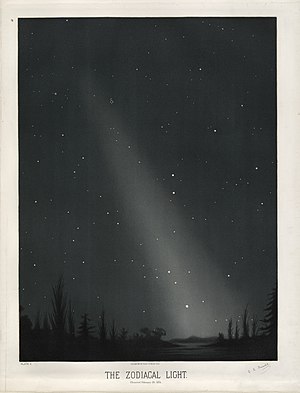In one of those displays of National Enquirerdom that seems to strike all too often on the Internet, the Huffington Post
wrote an article that received alot of play about the star
Betelgeuse going supernova and becoming a second sun in our day time sky. After I explained the bad science behind this "popularization" to an Astronomy Israel tour group from Birthright Israel, one of the students rightly concluded, "So you will have to pick up your children from daycare tomorrow."
Betelgeuse is my favorite star in my favorite constellation,
Orion. It is (sometimes) the brightest star in the constellation (it is a variable brightness star), the eighth brightest star in the sky, and one of the most massive and
largest stars known. It is one of the few stars whose nature is revealed to the naked eye since it is obviously red. Well, it is "obviously" red only after I point out to our guests that stars actually have naked-eye color and I ask them what color they think Betelgeuse is. Everyone is astonished to realize that Betelgeuse is red, although the women seem to see this more quickly than the men. I then like to do a color comparison with
Rigel, the young, hot, white-blue star in Orion's knee.
Betelgeuse and Rigel, the two brightest stars in the constellation Orion. Betelgeuse is an aging red supergiant. Rigel is a bright, young, hot blue-white star. Their natures are revealed even to the naked eye. (Click for full size)
Betelgeuse is what astronomers know as a red
supergiant star, a massive star that is nearing the end of its life, has burnt most of its hydrogen and helium fuel in thermonuclear reactions that power it and has cooled, thereby glowing red, a condition visible to the naked eye. A star in this condition is ready to go supernova, that is blow itself to bits in one of the most massive explosions in the universe. A supernova can generate more energy and become brighter than the whole galaxy of stars that contain it, such is the power of a
supernova explosion. This, apparently, was the excitement behind the Huffington Post article.
Of course, this has been know for years to astronomers, plus when we realize that "nearing the end of its life" in cosmological terms means "could happen in the next million years", there is no reason to think you will not have to pick your children up from daycare tomorrow. Indeed, even if Betelgeuse were to go supernova tomorrow (or 600 years ago, which it would have to do to go supernova tomorrow, since it is 600 light years distant) it is so far away, that it would be no brighter than the full moon in our daytime sky, and still just a point of light to our naked eye. Bright, yes, but not exactly a second sun. This could last for anywhere from a few days to a few months as the dying star collapsed to a neutron star core.
Betelgeuse, as imaged by the Hubble Telescope in 1995, would extend beyond the orbit of Jupiter if in place of our sun, consuming 75% of our solar system.
One of the more amazing things about Betelgeuse is that it is so huge that it was the first star whose stellar disk was resolved by telescopes on earth, the first such stellar disk besides our sun's ever seen. This was done using a technique called speckle interferometry in which the output of two telescopes separated by some distance is combined to create a single image of a star. In 1995 the Hubble Space Telescope was the first single telescope to reveal the disk of the star. Recently, using the
Infrared Optical Telescope Array (IOTA), the disk of Betelgeuse was resolved using interferometry to reveal two hot spots.
Two hot spots are imaged on the star Betelgeuse by the IOTA.
Betelgeuse is so large that if it were in the place of our sun, its radius would extend to engulf the planet Jupiter, or much of our entire solar system.
But you're still going to have to pick up your kids from day care tomorrow. And probably for at least a few 100,000 years beyond that. Maybe even a million.
Keep on looking up!




































